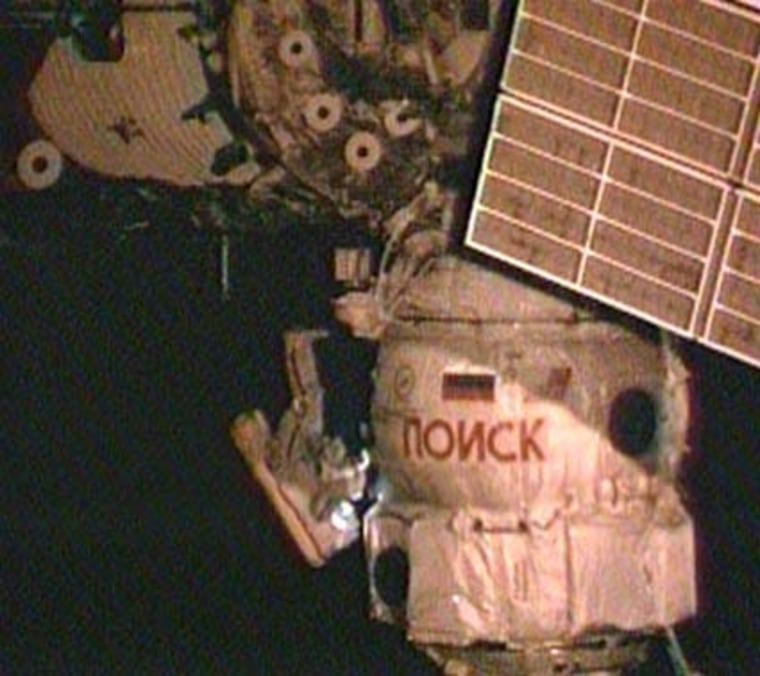Two Russian cosmonauts took a spacewalk outside the International Space Station on Thursday to start up a new docking port on the roof of the orbiting lab.
Cosmonauts Oleg Kotov and Maxim Suraev floated outside the station at 5:05 a.m. ET and spent almost six hours hooking up cables, antennas and other gear to activate the station's new Poisk docking port.
Russian Mission Control asked the cosmonauts how the weather was in space as they began their work.
"As long as it doesn't rain, we'll be fine because we didn't take any umbrellas with us," Suraev joked in Russian. "I was hoping to get a suntan."
The 5-hour, 44-minute spacewalk was the third for Kotov, a veteran cosmonaut, and the first for Suraev, who marveled at space after leaving the station while flying 210 miles (337 kilometers) above the southern Pacific Ocean.
"It looks great, although it's still pretty dark," he said. "Wow, am I really out?"
Also known as the Mini-Research Module 2, the Poisk module is a small science room that arrived at the space station in November 2009 to serve as research space. It doubles as an airlock and docking port, adding an extra parking spot for Russian-built Soyuz and Progress spacecraft.
That extra parking is vital for the space station to support six-person crews, who require at least two Soyuz ferry ships docked at all times to serve as lifeboats in emergencies.
Unmanned Progress cargo ships typically take up a third spot, and a fourth docking port at the front of the station is built to host visiting NASA space shuttles. With Poisk, the station has five docking ports in all.
Space station astronauts plan to dock a spacecraft at Poisk, which means "Explore" in Russian, for the first time on Jan. 21, when they move their Soyuz vehicle from a different port, mission managers said.
The Poisk module is about 13 feet (4 meters) long, 8 feet (2.5 meters) wide and weighs about 8,000 pounds (3,636 kilograms). It has about 380 cubic feet (10.7 cubic meters) of usable living space inside.
Thursday's spacewalk was the 24th Russian spacewalk outside the space station and the 137th excursion overall dedicated to the orbiting laboratory's construction and maintenance.
Slideshow 12 photos
Month in Space: January 2014
Kotov and Suraev tossed two big wads of space trash — unneeded insulation covers — overboard during the spacewalk. The trash is expected to burn up in Earth's atmosphere in about two weeks. They also retrieved a Russian biology experiment from the outer hull of the space station.
The $100 billion space station has been under construction for more than a decade and is due to be completed later this year. The space station is home to five spacefliers — two Russians, two Americans and one Japanese astronaut.
With three spacewalks now under his belt, Kotov ended the day with 16 hours and 46 minutes of orbital work. Suraev, meanwhile, has five hours and 44 minutes of spacewalking time after one excursion.
At times, the cosmonauts were well ahead of schedule and paused to take photos.
"You are a superstar," Suraev said as he took the snapshots of his crewmate.
The spacewalk came at a busy time for the space station crew. Earlier this week, the astronauts used the outpost's robotic arm to move a huge spare-parts shelf from one end of the space station to the other to prepare for more deliveries later this year.
Next week, the astronauts will move one of their Soyuz spacecraft to the new Poisk docking port, then gear up for the arrival of the space shuttle Endeavour in early February. Endeavour is due to launch six astronauts to the space station on Feb. 7 to deliver a new module and observation port for the orbiting laboratory.

